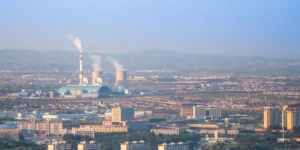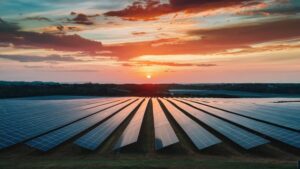INTERVIEW | Efficiency ‘relevant but not key’ when it comes to green hydrogen for long-duration energy storage

Japanese-based Mitsubishi Power is placing bets on a transition from gas-fired power plants to hydrogen, with its recent combined-cycle gas turbines capable of firing up to 30% H2 as standard.
“More than two thirds of the global emissions today are coming from the power generation sector,” says Javier Cavada, president and CEO for Europe, the Middle East and Africa at Mitsubishi Power, in an interview with Hydrogen Insight.
He referred to a pledge signed at COP28 which calls for a tripling of renewable energy capacity — which will almost certainly require greater investment in energy storage to back up intermittent wind and solar generation.
Hydrogen is often touted as a potential solution. After all, when wind turbines and solar panels produce more power than the grid needs, why not use that otherwise wasted power to produce H2 and later burn it in a gas turbine when the sun isn’t shining and the wind isn’t blowing?
Due to hydrogen’s ability to be stored indefinitely — unlike energy in batteries — excess solar power could be converted to H2 in the summer and be used to produce clean energy in winter.
Critics have pointed out that hydrogen — the smallest molecule in existence — is extremely prone to leakage, while wider issues with energy efficiency throughout production, storage, and end use mean that for each megawatt-hour of renewable electricity used to power an electrolyser, less than 30% of that power will go back on the grid once the H2 is finally burned.
Article continues below the advert
“Efficiency’s importance is inversely proportional to the duration of the storage,” says Cavada, who had formerly headed liquid-air energy-storage company Highview Power and still sits on its board of directors.
When it comes to short-duration storage, high efficiency is necessary as otherwise energy is wasted very quickly. “But the longer you are able to store it, and the safer you are able to store it and deliver it in the right moment, the efficiency gets lower and lower in importance,” he argues.
He points out that the biggest source of energy storage today — pumped hydropower — has an energy efficiency of 40-70%, depending on the size of the dams.
“Is the efficiency relevant? Well, it is relevant of course, but it’s not the key thing. The key is that when you are able to pump water into the dam, you are storing it… and you’re going to be able to deploy that power when you need it next afternoon, next day, next week. But it starts to be tough with next month or next season.”
Cavada notes that rather than focusing on round-trip efficiency, the focus should be on ensuring the power system continues to work. “You are delivering [electricity] in the right time when you need it, not in the next ten hours but in the next ten days, the next ten weeks. And that’s what we’re talking about with a high energy-density molecule such as hydrogen in that sense.”
He also argues that compared to battery storage, which requires thousands of units stacked into containers and larger cooling systems in order to reach sufficient scale, salt caverns for hydrogen can easily store huge amounts of potential energy.
“If you want to compare it with a small application, it doesn’t make any sense. You will not have hydrogen storage to run a car or to run a laptop — we are looking at infrastructure scale,” Cavada says. “We are not looking at solving the kilowatts and one or two, three megawatts. We’re looking at the terawatts and the multi-gigawatts challenge that we have.”
However, Cavada did not provide estimates for levelised costs of storage between hydrogen, batteries, pumped hydropower, and more nascent technologies such as liquid-air systems, although he adds that curtailed power should be considered zero-cost as it is otherwise wasted.
Is it worth blending hydrogen with gas for co-firing?
Although “the capital investment is almost the same” between gas turbines capable of running on 30% H2 and conventional equipment, Cavada admits: “The operating cost depends on the price of hydrogen, which we feel is a challenge.”
“Ultimately, delivery and investment are the solutions to feasibility — it’s a case of deploying more and more volume to reduce costs and to make it profitable for operators to adopt,” he says. “It happened with gas turbines 30 years ago, solar 20 years ago and wind ten years ago, and now it’s happening with hydrogen.”
Blending hydrogen into gas for power generation still comes with siginficant emissions, although Cavada argues that the practice could still reduce the overall amount of greenhouse gases released by the sector today.
“If you have an 800MW combined cycle [gas turbine] and you inject 20%, 25% hydrogen, well, you are reducing your emissions the same percentage,” he estimates.
This is only true if these percentages refer to energy content, rather than volume. Due to differences in molecular weight, a 20% blend of hydrogen by volume only represents 7% in terms of energy content, and would therefore only reduce CO2 emissions by only 7%, the International Renewable Energy Agency noted in its Global Trade Hydrogen 2022 report.
Mitsubishi Power is due to demonstrate a 100% hydrogen-fired gas turbine next year, although Cavada notes that the company is unlikely to bring the equipment to market before a couple of years of validation is complete.
Cavada also suggests that switching from gas to hydrogen to fire power plants could come with energy security benefits. He raises that hydrogen is the same on a molecular level regardless of where it is produced.
Natural gas sourced from different locations can vary significantly in the concentration of gases other than methane, such as other hydrocarbons, hydrogen sulphides, and water vapour. As such, switching from one source to another, such as from Russia to Norway, can come with additional costs to process a different make-up of gas before it can be stored or used.
Cavada also notes that while for natural gas, “you only have certain geographies who produce a majority”, hydrogen can be produced from a variety of sources and a wider range of countries.
The market for hydrogen-fired power
While Mitsubishi Power’s largest order to date — from Utah’s 840MW IPP Renewed power project for two turbines capable of running on 30% H2 from 2025 before being converted to run on 100% H2 by 2045 — is located in the US, Cavada notes that North America might not be the biggest market for the company.
“The biggest source of new hydrogen-ready power generation, I can see that it’s becoming the Middle East,” he says, noting that Mitsubishi Power is already engaged in several projects in the region and specifically in Bahrain, Saudi Arabia, UAE, and Egypt.
However, Cavada highlights that Europe is still a relatively advanced market for hydrogen-fired power, with the company supplying turbines to projects in Germany, the Netherlands and the UK.
He does note, though, that final investment decisions on both hydrogen supply and power plants will need to be taken soon.
“Time is running out. Whatever we do in the couple of years ahead of us is going to influence what the following 20, 30 years are,” Cavada says. “It’s a time of decisions, it’s a time of regulations, it’s a time of FIDs [final investment decisions] in 2024 and 2025, so that before this decade is gone, everything we start to build in 2027 is ready for the following decade.”






